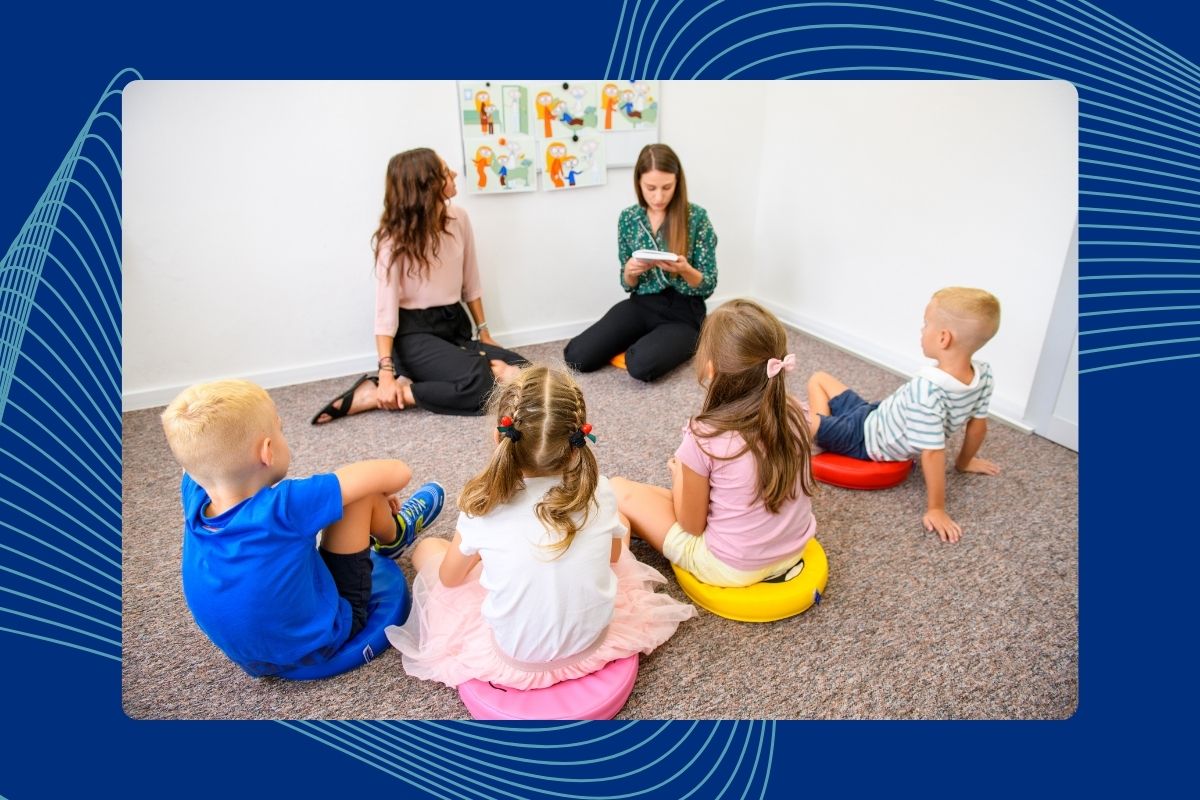Applied Behavior Analysis (ABA) therapy is a well-established and effective approach for supporting individuals with autism and other developmental disorders. While individual ABA therapy sessions have been the traditional method, group ABA therapy sessions are gaining recognition for their unique benefits. This blog will explore the numerous advantages of group ABA therapy, highlighting how it can enhance skill development, promote social interactions, and provide cost-effective solutions for practice owners and therapists.
Understanding Group ABA Therapy
Group ABA therapy involves providing ABA interventions in a group setting rather than one-on-one. This approach leverages the natural dynamics of group interactions to teach and reinforce desired behaviors. Typically, group sessions are structured to include multiple children working with one or more therapists. Activities are designed to target specific skills while allowing for the benefits of peer interaction. Compared to individual sessions, group therapy offers a different but complementary set of advantages that can significantly impact a child’s development.
Social Interaction and Skill Development
One of the primary benefits of group ABA therapy is the opportunity for children to engage in social interactions. Social skills such as communication, sharing, and turn-taking are crucial for children with autism, yet these skills can be challenging to develop in isolated settings. Group therapy provides a natural environment for practicing these skills. For example, during a group activity, children learn to wait for their turn, follow group rules, and interact with their peers, which are essential components of social competence.
Enhanced Learning through Peer Modeling
Peer modeling is a powerful tool in ABA therapy. In a group setting, children can observe and imitate the behaviors of their peers. This observational learning can be incredibly effective, as children are often motivated to mimic their peers’ actions. For instance, if one child demonstrates a desirable behavior such as using polite language, other children in the group are likely to imitate this behavior, leading to faster and more widespread skill acquisition. Real-life examples and case studies have shown that children often achieve milestones more quickly when they have positive peer models to emulate.
Generalization of Skills
Skill generalization refers to the ability to apply learned behaviors in various settings and situations. Group ABA therapy is particularly effective in promoting generalization. In individual sessions, skills are often learned in a highly controlled environment, which can make it difficult for children to transfer these skills to other contexts. However, group therapy provides diverse interactions and scenarios that encourage children to apply their skills in different ways. For example, a child who learns to initiate conversations in a group session is more likely to use this skill in a classroom or playground setting.
Cost-Effectiveness for Practices
Group ABA therapy is also cost-effective for ABA practices. Individual therapy sessions require one therapist per child, which can be resource-intensive. In contrast, group sessions allow one therapist to work with multiple children simultaneously, reducing the overall cost of therapy. This cost reduction can make ABA therapy more accessible to families who might otherwise be unable to afford it. Additionally, practice owners can optimize their resources and serve more clients without compromising the quality of care.
Increased Motivation and Engagement
Children often find group activities more engaging and motivating than individual tasks. The presence of peers creates a dynamic and stimulating environment that can enhance participation. For example, group games and collaborative projects can capture children’s interest more effectively than solitary tasks.
Collaboration and Support Among Therapists
Group ABA therapy sessions offer therapists a unique opportunity to collaborate and learn from each other. Multiple therapists working together can share insights, strategies, and feedback, leading to improved therapy practices. This collaborative approach also provides a support system for therapists, allowing them to discuss challenges and celebrate successes. For clients, this means receiving the benefit of a cohesive and well-coordinated team of professionals.
Building a Sense of Community
Group therapy sessions help build a sense of community among children and their families. Participating in group activities allows children to form friendships and support networks that extend beyond therapy sessions. This sense of belonging can have long-term positive effects on a child’s emotional and social development. Families also benefit from the community aspect, as they can connect with other parents facing similar challenges, share experiences, and offer mutual support.
Addressing Common Concerns
Despite the benefits, some concerns about group ABA therapy need addressing. One common worry is that children might not receive enough individualized attention. However, skilled therapists can ensure that each child’s needs are met within the group setting by using individualized goals and strategies tailored to each participant. Additionally, managing group dynamics can be challenging, but with proper training and experience, therapists can create a structured and supportive environment that maximizes the benefits of group therapy.
Key Takeaways
Group ABA therapy sessions offer a multitude of benefits, from enhanced social skills and peer modeling to cost-effectiveness and increased motivation. By understanding and leveraging these advantages, ABA practice owners and therapists can provide high-quality care that meets the diverse needs of their clients. As the field of ABA therapy continues to evolve, group sessions will play an increasingly important role in helping children with autism and other developmental disorders achieve their full potential.
FAQs
1. How do group ABA therapy sessions differ from individual sessions?
Group ABA therapy sessions involve multiple children working together under the guidance of one or more therapists, while individual sessions focus on one-on-one interaction between the therapist and the child. Group sessions emphasize social interactions, peer modeling, and group activities, allowing children to practice social skills such as communication, sharing, and turn-taking in a natural setting. In contrast, individual sessions are tailored to the specific needs of one child, allowing for highly personalized and intensive interventions.
2. What are the benefits of group ABA therapy for children with autism?
Group ABA therapy provides several benefits, including social interaction, peer modeling, skill generalization, increased engagement, and cost-effectiveness. In group settings, children learn to interact with peers, improving their social skills. Observing and imitating peers can accelerate learning and skill acquisition. Group settings promote the application of learned skills in various contexts, making it easier for children to generalize what they have learned. The dynamic and interactive nature of group activities often increases children’s motivation and participation. Additionally, group sessions can be more affordable than individual therapy, making ABA therapy more accessible to families.
3. How do therapists ensure individualized attention in a group setting?
Therapists use various strategies to ensure that each child receives individualized attention within a group setting. These include setting individualized goals for each child, keeping group sizes small to allow for effective monitoring and addressing each child’s progress, providing targeted support to individual children during group activities, and regularly collecting data to track each child’s progress and adjust interventions as needed.






